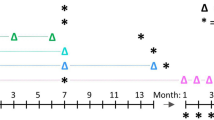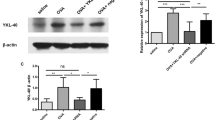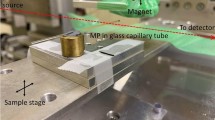Abstract
Current liposome-based delivery protocols for gene therapy are relatively inefficient. In a pharmacological approach to enhance liposome-mediated gene delivery we have evaluated β-estradiol and methyl-prednisolone as enhancing agents. We have shown that β-estradiol in combination with lipoplex can significantly increase luciferase gene expression in sub-confluent, confluent and polarized human bronchial epithelial (16HBE) cells 23-fold, 100-fold and 900-fold, respectively, when compared with lipoplex alone. Similarly, incorporation of methyl-prednisolone into lipoplexes increases luciferase gene expression in confluent and polarized 16HBE cells 70.8-fold and 48-fold, respectively. Greater levels of gene expression were obtained when β-estradiol (9.5-fold enhancement) or methyl-prednisolone (14-fold enhancement) were mixed with the liposome before addition of the plasmid compared with addition of the steroid after lipoplex formation. β-Estradiol-containing lipoplexes were also evaluated in vivo where in the murine lung and nasal epithelium an eight-fold and 7.5-fold enhancement in gene expression were found compared with lipoplex alone. Incorporating β-estradiol into lipoplexes increased both the total number of cells transfected and the amount of intracellular plasmid within the cell, including the nuclear compartment, compared with lipoplex alone. These results demonstrate the ability of steroids to enhance gene delivery in vitro and in vivo and thus may have the potential to improve gene therapy strategies.
This is a preview of subscription content, access via your institution
Access options
Subscribe to this journal
Receive 12 print issues and online access
$259.00 per year
only $21.58 per issue
Buy this article
- Purchase on Springer Link
- Instant access to full article PDF
Prices may be subject to local taxes which are calculated during checkout








Similar content being viewed by others
References
Riordan JR et al. Identification of the cystic fibrosis gene: cloning and characterization of complementary DNA Science 1989 245: 1066–1073
Caplen NJ et al. Gene therapy for cystic fibrosis in humans by liposome-mediated DNA transfer: the production of resources and the regulatory process Gene Therapy 1994 1: 139–147
Gill DR et al. A placebo-controlled study of liposome-mediated gene transfer to the nasal epithelium of patients with cystic fibrosis Gene Therapy 1997 4: 199–209
Zabner J et al. Adenovirus-mediated gene transfer transiently corrects the chloride transport defect in nasal epithelia of patients with cystic fibrosis Cell 1993 75: 207–216
Zabner J et al. Repeat administration of an adenovirus vector encoding cystic fibrosis transmembrane conductance regulator to the nasal epithelium of patients with cystic fibrosis J Clin Invest 1996 97: 1504–1511
Crystal RG et al. Administration of an adenovirus containing the human CFTR cDNA to the respiratory tract of individuals with cystic fibrosis Nat Genet 1994 8: 42–51
Knowles MR et al. A controlled study of adenoviral-vector-mediated gene transfer in the nasal epithelium of patients with cystic fibrosis N Engl J Med 1995 333: 823–831
Grubb BR et al. Inefficient gene transfer by adenovirus vector to cystic fibrosis airway epithelia of mice and humans Nature 1994 371: 802–806
Jiang C et al. Efficiency of cationic lipid-mediated transfection of polarized and differentiated airway epithelial cells in vitro and in vivo Hum Gene Ther 1998 9: 1531–1542
Pickles RJ et al. Limited entry of adenovirus vectors into well-differentiated airway epithelium is responsible for inefficient gene transfer J Virol 1998 72: 6014–6023
Jain PT, Gewirtz DA . Estradiol enhances gene delivery to human breast tumor cells J Mol Med 1998 76: 709–714
Jain PT, Seth P, Gewirtz DA . Estradiol enhances liposome-mediated uptake, preferential nuclear accumulation and functional expression of exogenous genes in MDA-MB231 breast tumor cells Biochim Biophys Acta 1999 1451: 224–232
McEwan IJ, Wright AP, Gustafsson JA . Mechanism of gene expression by the glucocorticoid receptor: role of protein-protein interactions Bioessays 1997 19: 153–160
Braun S et al. In vitro and in vivo effects of glucocorticoids on gene transfer to skeletal muscle FEBS Lett 1999 454: 277–282
Cozens AL et al. CFTR expression and chloride secretion in polarized immortal human bronchial epithelial cells Am J Respir Cell Mol Biol 1994 10: 38–47
Cozens AL et al. A transformed human epithelial cell line that retains tight junctions post crisis In Vitro Cell Dev Biol 1992 28A: 735–744
Worgall S et al. Free cholesterol enhances adenoviral vector gene transfer and expression in CAR-deficient cells Mol Ther 2000 1: 39–48
Pickles RJ, Barker PM, Ye H, Boucher RC . Efficient adenovirus-mediated gene transfer to basal but not columnar cells of cartilaginous airway epithelia Hum Gene Ther 1996 7: 921–931
Matsui H, Johnson LG, Randell SH, Boucher RC . Loss of binding and entry of liposome–DNA complexes decreases transfection efficiency in differentiated airway epithelial cells J Biol Chem 1997 272: 1117–1126
Clarke R, van den Berg HW, Murphy RF . Reduction of the membrane fluidity of human breast cancer cells by tamoxifen and 17 beta-estradiol J Natl Cancer Inst 1990 82: 1702–1705
Porto CS et al. Receptor-mediated endocytosis of an extracellular steroid-binding protein (TeBG) in MCF-7 human breast cancer cells Endocrinology 1991 129: 436–445
Nykjaer A et al. An endocytic pathway essential for renal uptake and activation of the steroid 25-(OH) vitamin D3 Cell 1999 96: 507–515
Hartikka J et al. An improved plasmid DNA expression vector for direct injection into skeletal muscle Hum Gene Ther 1996 7: 1205–1217
Colin M et al. Cell delivery, intracellular trafficking and expression of an integrin-mediated gene transfer vector intracheal epithelial cells Gene Therapy 2000 7: 139–152
Acknowledgements
This work was supported by the CF Trust (UK).
Author information
Authors and Affiliations
Rights and permissions
About this article
Cite this article
Wiseman, J., Goddard, C. & Colledge, W. Steroid hormone enhancement of gene delivery to a human airway epithelial cell line in vitro and mouse airways in vivo. Gene Ther 8, 1562–1571 (2001). https://doi.org/10.1038/sj.gt.3301565
Received:
Accepted:
Published:
Issue Date:
DOI: https://doi.org/10.1038/sj.gt.3301565
Keywords
This article is cited by
-
A LacZ-based transgenic mouse for detection of somatic gene repair events in vivo
Gene Therapy (2004)
-
Cationic corticosteroid for nonviral gene delivery
Gene Therapy (2004)



